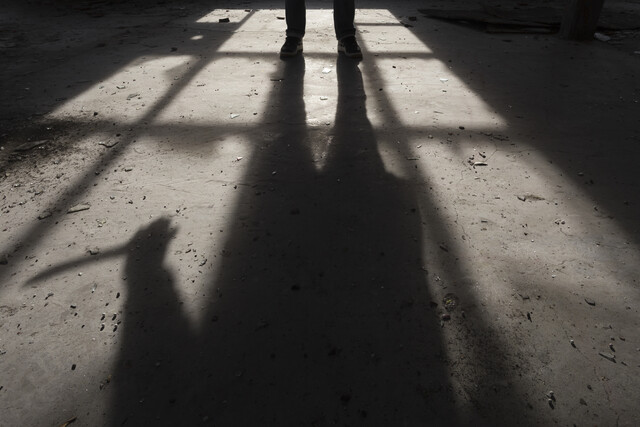This is a specific discussion of the dangers of water proximity for children and how to make water a fun part of a child's environment.
Water can be a wonderful part of a child's life. Bath or shower time before bed can help children bond with their siblings and parents over a fun nighttime routine. Playing in the sprinklers or pool is an indelible part of many happy summer memories. Time spent in the ocean, on a lake, or in a river is the main activity of many family vacations. But all of these scenarios, along with many that you may not suspect, can lead to severe injury or even death.
Unfortunately, drowning is a leading cause of death for children. Those most affected are children under the age of four but teenagers are also very susceptible. In fact, drowning is the second leading cause of accidental deaths for children ages one to fourteen, coming only behind automobile accidents. Water accidents do not just cause deaths. They can also cause injuries that require care at a hospital. Due to severe oxygen deprivation, a nonfatal drowning incident can even result in severe brain injuries that end with a permanent disability like quadriplegia.
Supervision
The most important concept when it comes to water safety is supervision. If someone is watching a child around water, drowning becomes much less likely. If a child gets too close to the edge of a pool, a responsible adult can pull them away. If the child slips and falls in, having a responsible adult close by means that the child can get pulled from the water within a few seconds. Drowning can easily happen at large parties where everyone is sure that someone else is watching the children. It is easy to make that mistake but it is also easy to ensure that an adult is always watching.
If you have children around any water, consider having a lanyard that designates a person as the "supervisor." The physical marker means that the supervisor not only has a concrete reminder of their duties but also that they will have to intentionally pass the lanyard and therefore, the responsibility off to another adult if they have to leave. The physical representation of the supervision responsibilities ensures that there are no misunderstandings or miscommunications where someone was sure that another person was taking over, when, in reality, that person had no idea that it was their turn. Clearly defined supervisory roles and responsibilities are an excellent way to ensure water safety.
In a situation like at a pool party, you may also wish to survey any children present or better yet, their parents to gauge everyone's swimming abilities and water safety. You may be surprised by children who do not have strong swimming skills. It is vitally important to know which children struggle with swimming so that you can respond appropriately. If you assume a child is a confident swimmer when in reality they are not, you may misinterpret the signs of drowning as part of normal play.
It is never too early for water safety lessons. Very small children cannot "swim" yet but they can learn to love water while also respecting water and water safety.
An experienced water safety teacher will allow your child to enjoy water time but will also show them skills like holding their breath or blowing bubbles. Your child may swallow a bit of water or get some water in their eyes, which can potentially scare them but a child with a healthy fear of and respect for the power of water is a child that is less likely to wander into water alone. Some parents are afraid of putting their children in these lessons too soon because they do not want to scare them, but finding a good teacher will ensure that the instruction is effective and engaging, not frightening.
Another important skill is called the "wall walk." This is one that you can easily teach your own child. The wall walk shows a child how to cling to the wall and return to the steps. Show your child where the steps are in the pool then pick a random place on the pool wall to begin. Until your child is comfortable with this exercise, stay close to the steps. As they become more adept and build confidence, you can move farther and farther away.
Instruct your child to grab the ledge. Have them identify the direction in which they must move in order to reach the steps. Then have them slide one hand at a time over in the desired direction to "walk" their hands that way. It is important that your child remembers to keep one hand closed firmly on the ledge while the other hand moves. The moving hand should keep contact with the ledge and just slide along it before grasping firmly again. This helps to make sure that the child does not compromise their safety by losing their grip on the wall.
Bathroom Safety
There are two main water safety issues in the bathroom--the toilet and the bathtub.
Very young children may be curious about the toilet. They can easily tip over and fall in but cannot easily get out. Make it clear to your child that the bathroom is not a place to play. If your child is potty training, a child-sized potty or a child seat to place over the regular seat can prevent slipping and falling into the toilet. You may also consider a safety clip for your toilets. They work like the safety clips for drawers and cabinets but they secure the lid of the toilet down so that the child cannot open it. It may be a hassle for the adults that need to use the toilet but it is a temporary inconvenience in exchange for assurance that your child cannot accidentally fall in.
Bathtubs pose a much larger threat than toilets. Even much older children and teenagers are at risk for drowning in a tub. If you do not have a textured tub, consider installing anti-skid stickers or a rubber mat that suctions to the bottom of the tub. You should also have a mat on the floor and be vigilant about cleaning up any splashed or spilled water in the bathroom. You can also purchase a foam cover for the spout or just cover it with a washcloth or hand towel to avoid a head injury if your child bumps into it.
Pool Safety
A fence around your pool is a guaranteed way to reduce the risk of a water-related accident for young children. A fence that completely encloses the pool has been shown to reduce such injuries for little ones by more than half. It might be a significant financial investment but it has a worthy return.
Make sure that your children, as well as any other children who use your pool, know how to remain safe around water. Children should not horseplay near the pool. They also should not dive from any area that is not designated for diving. If no part of your pool is deep enough to safely dive, then make a clear rule that diving is not allowed. Diving in water that is too shallow can cause severe head and neck injuries that can easily lead to drowning or permanent injury.
If you live in an area that experiences storms, instruct anyone using the pool that they must get out of the water if a storm is coming. It is incredibly dangerous to be in water when there is a threat of lightning.
Lake, River, and Ocean Safety
Children, even teenagers who are strong swimmers, should not swim alone in an outdoor body of water. Teach your children to always have a buddy for swimming and to always tell an adult before heading into the water. Just like in a pool, there should always be adult supervision for swimming in a lake, river, or ocean. The shorelines of these bodies of water can be very shallow and then drop off sharply. Lakes or riverbeds may contain thick weeds in which a child can become tangled. A river or the ocean may have strong and dangerous undercurrents that are impossible to detect from the shore. Using caution and floatation devices can help to avoid accidents but competent adult supervision is the best way to help keep children safe.
Have your child wear protective footwear like sturdy water shoes. The muddy or sandy shores of these bodies of water can obscure sharp rocks, broken glass, or other potentially dangerous materials. Such footwear can also protect them from creatures like snakes or crabs.
In Case of Emergency
If you ever find yourself looking for a missing child when there is water nearby like a pool, lake, bucket, or even puddles of standing water after a storm, be sure to look for the child in the water before you look anywhere else. If the child happens to be in danger in the water, seconds can make the difference between a child who survives without permanent injury and the child who does not. Get the child out of the water immediately. If there is another person with you, preferably an adult, have that person call 911. If you are alone, retrieve the child first and then call 911. Even if you think you are alone, shout loudly for help. There may be someone nearby that will hear you and can help you save the child.
If you can, check the child's airway first to make sure that it is clear of any obstructions. If the child needs CPR if they are not breathing and you have taken a CPR class, begin to administer chest compressions. Someone should have a 911 operator on the phone at this point, so be sure to follow any instructions or advice that they give.
Sometimes, a child who is normally a capable swimmer jumps or dives into a body of water and becomes injured, thereby rendering themself at risk for drowning. If you believe that the child may have injured their neck in this or any other scenario, be sure to stabilize the head as best as you can. You can put your hands on the child's shoulders and hold your forearms next to their ears to provide stability until emergency services arrive. If the child does have a neck injury, any movement could worsen it. Therefore, if you stabilize the neck, you may save the child from a more severe injury.
Water-related injuries are very scary but try your best to remain calm and steady. If you panic, the child may also panic and move or thrash in ways that could worsen any injuries. If you can, speak gently and reassuringly to the child and remain calm and responsive while on the phone with the 911 operator.

























